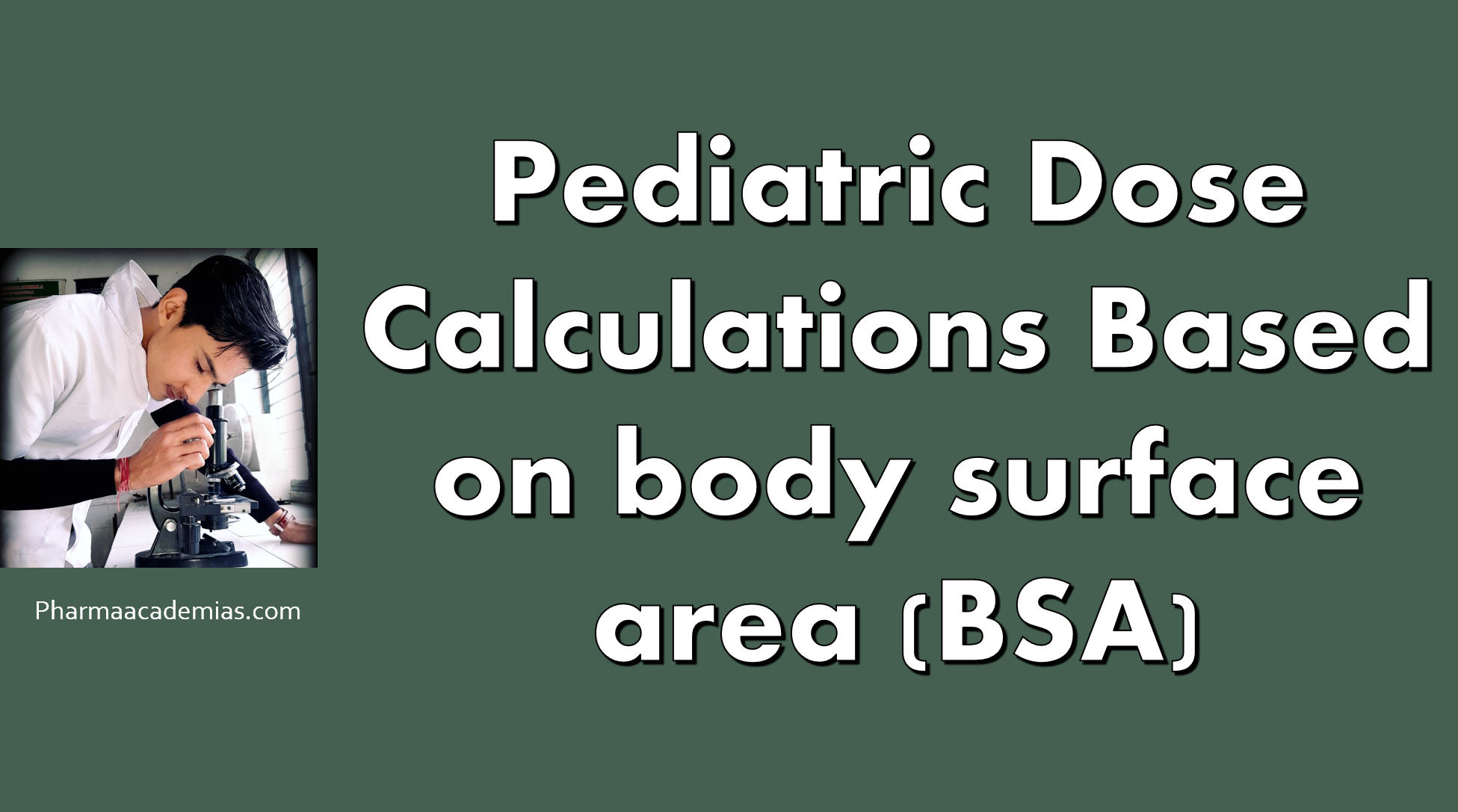Pediatric dose calculations based on body surface area (BSA) are particularly important for medications with a narrow therapeutic index or when dealing with older children and adolescents. Here are formulas and examples:
Body Surface Area (BSA) Dosing:
Formula (Mosteller):

Example:
Calculation: If a child has a height of 120 cm and a weight of 22 kg, the BSA would be

BSA-Based Dosing
Formula: Dose = BSA × Dose per m2
Examples
Infants (0-1 year):
For a 9-month-old with a BSA of 0.3 m² and a recommended dose of 5 mg/m², the calculation would be 0.3 m2 × 5 mg/m2 = 1.5 mg
Toddlers (1-3 years):
A 2-year-old with a BSA of 0.5 m² and a prescribed antibiotic at 8 mg/m² would take
0.5 m2 × 8 mg/m2 = 4 mg
Preschoolers (3-6 years):
Suppose a 4-year-old with a BSA of 0.6 m² requires an antipyretic at 10 mg/m². The dose would be 0.6 m2 × 10 mg/m2 = 6 mg
School-Age Children (6-12 years):
If an 8-year-old with a BSA of 0.8 m² needs a pain reliever at 12 mg/m², the dose would be
0.8 m2 × 12 mg/m2 = 9.6 mg
Adolescents (12-18 years):
For a 15-year-old with a BSA of 1.5 m² and an antihistamine prescribed at 15 mg/m², the dose would be 1.5 m2 × 15 mg/m2 = 22.5 mg
Considerations
BSA Categories:
Medications might be categorized based on BSA, with recommended dosages for specific BSA ranges.
Precision in Dosage:
BSA dosing aims for greater precision, especially in older children and adolescents, where weight alone might not accurately reflect body size.
Example Scenario
Scenario: An 11-year-old child with a BSA of 1.2 m² needs an antibiotic.
Formula: Use the BSA-based formula: Dose = BSA × Dose per m2
Example Calculation: If the recommended dose is 10 mg/m², the calculation would be
1.2m2 × 10mg/m2 = 12mg.
Always follow the specific dosing recommendations provided by healthcare professionals and the pharmaceutical information for each medication. The examples provided here are general and may not be applicable to all medications or medical conditions.

